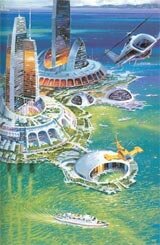OZ | March 24th, 2009 | Architecture and Games |  | Bookmark
| Bookmark
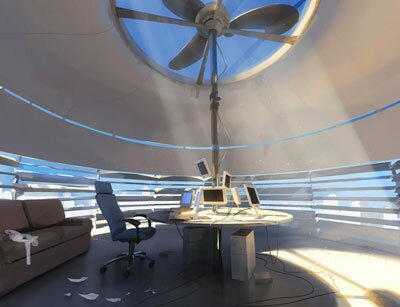
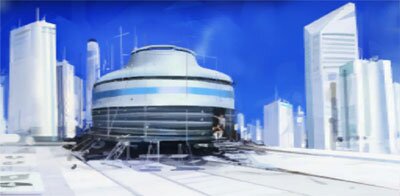
Since the turn of the century, repurposed spaces have proliferated, spurred by 21st century cultural influences and the green initiative. It’s redefining the urban fabric, evident here in Lower Manhattan where the world’s commercial mecca has become increasingly residential since 2001. More creative endeavours have led to efforts including the iconic
Freitag store in Zurich and a
Redondo Beach house, both utilizing the ever popular recycled shipping container.
Recently, the most creative repurposed structures have existed in the digital realm of games, from Mirror’s Edge to Fallout 3.
Continue reading ‘Gaming’s Repurposed Spaces’
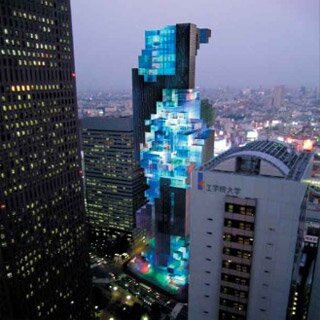
We are somewhat conditioned to think of architecture via construction. Yet this isn’t always the case.
In Mahabalipurum, India reside five Rathas temples, Chariots of the Gods, carved from a single to five large slabs of granite (sources vary). Known as the Pancha Pandava Rathas, they represent an evolution in Dravidian style architecture. A progression from rock cut caves whose pinnacle was reached elsewhere at Petra. Yet these ornate freestanding structures situated in a sandy compound amidst Casuarina trees, were built purely by subtraction, carved from the top down.
Architecture by subtraction was also the process used to create spaces in computer gaming’s The Dark Engine. The engine was developed in the mid nineties by Looking Glass Technologies and put to use in their fabled titles, Thief I & II and System Shock 2. Documentation for the level editor, DromED, describes the process.
Continue reading ‘Architecture by Subtraction’
OZ | February 21st, 2008 | Games |  | Bookmark
| Bookmark
The fundamental strength of computer games resides in choice. The player’s ability to make decisions, to direct a course of action and effect a narrative or simulation is a remarkable and distinct quality of digital games that highlights the medium’s future potential.
Power of Choice offers the beginnings of a theoretical framework for computer game design and is a rare excursion beyond ArTect.net’s visual design focal point.
Continue reading ‘Power of Choice’
OZ | December 10th, 2007 | Games |  | Bookmark
| Bookmark
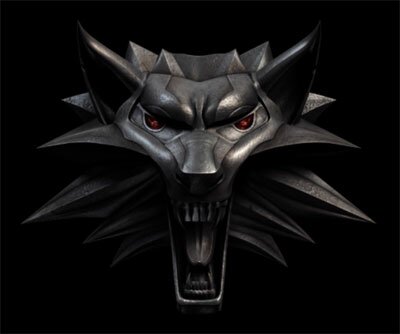
One of the best computer role-playing games in years, The Witcher, also features some of the most fascinating art direction. The dark atmosphere and dilapidated world doesn’t house the grandiose architecture featured in similar games of its ilk. Yet with unique flourishes and attention to detail, it’s equally effective, even more so.
A circular room within a crumbling fortress features a vaulted ceiling that converges into a central fireplace. It’s an ingenious combination of the central hearth common in residences through the 18th century and the vaulted ceilings of Romanesque architecture. An impressive space enhanced by polished marble floors and stained glass windows.
Continue reading ‘The Witcher - Art & Architecture’
OZ | October 27th, 2007 | Books and Games |  | Bookmark
| Bookmark

The holiday season almost upon us, video game publishers are about to deluge the market with AAA offerings throughout November. Several highly anticipated titles will be released with accompanying artbooks, highlighting the concept design and visual development that went into realizing these virtual worlds.
Continue reading ‘Game Art Books’
OZ | September 26th, 2007 | Games |  | Bookmark
| Bookmark

Crysis, one of the most anticipated PC games of the year, has a bonus DVD now available with pre-orders. From the developer of Far Cry, Crysis is built on the new CryEngine2, possibly the most graphically advanced realtime 3D game engine. Not apparent on the case, the DVD is an Art Disc. Included are concept art, in-game renders and marketing art with some images over 4K resolution. This bonus is available at Gamestop or former EBGames outlets.
Continue reading ‘Crysis Concept Art’
OZ | September 25th, 2007 | Advertising and Games |  | Bookmark
| Bookmark
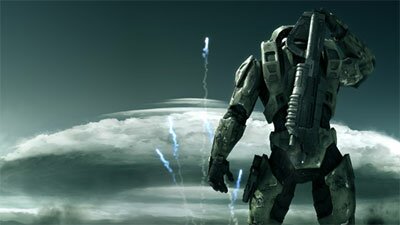
HALO 3, the anticipated savior of Microsoft’s unprofitable XBOX Division, has just debuted. I’ve never had much interest in HALO. The first title, generally considered the superior effort, failed to live up to its hype. The more interesting game exteriors were too often replaced with endlessly cloned interiors that only served to pad the game’s length, epitomized by the universally reviled Library mission. The Warthog vehicle mechanics coupled with its popular multiplayer capability was a milestone for console games, but didn’t captivate against comparable multiplayer fare on the PC. The premise was sufficiently engaging, but ultimately a hodge-podge construct blatantly ripped from Ringworld and Aliens, plus countless others. Granted I’m a cynical jaded gamer disappointed with the lack of design progress exhibited by the games industry over the years.
The game’s iconic protagonist, the Master Chief, whose identity remains obscured, is a stroke of brilliance. We desire to know the Master Chief’s identity, yet his obscurity serves gaming perfectly as the Master Chief becomes synonymous with the player. Overall HALO does manage to hit the right note where others haven’t and has subsequently become the Star Wars of gaming. This of course aided by a marketing campaign for HALO 3 that is more reminiscent of Nike than Microsoft. As highlighted by the following commercials spearheaded by Agency McCann, San Francisco.
Continue reading ‘HALO’
OZ | August 14th, 2007 | Books and Games |  | Bookmark
| Bookmark
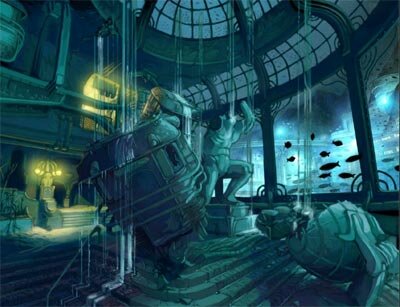
In one week, BioShock, the highly anticipated FPS/RPG from the makers of System Shock II, will arrive on PC & XBOX 360. BioShock takes place in Rapture, an art deco underwater city built in 1946 as the “ultimate capitalistic and individualist paradise.”
Unsurprisingly, but much to my chagrin, a poll for the contents of the BioShock Limited Edition resulted in the inclusion of a Big Daddy Figurine, Making of DVD and Soundtrack CD, but no BioShock Artbook.
Elizabeth Tobey in conjunction with the BioShock team has remedied this with BioShock: Breaking the Mold, a digital art book of concept design. The sixty plus page book is available for free in two PDF’s, a smaller ebook download and a high resolution version.
Continue reading ‘Free BioShock Artbook’
OZ | August 13th, 2007 | Books and Games |  | Bookmark
| Bookmark
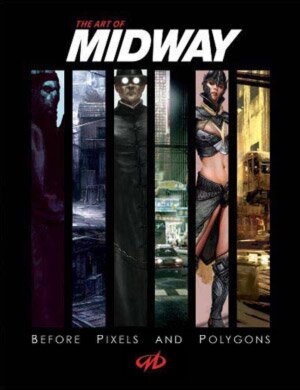
In late July at the San Diego Comic-Con, Design Studio Press debuted The Art of Midway: Before Pixels and Polygons. This book on the video game developer features 160 pages with over 200 illustrations including work by Midway’s renowned Creative Visual Director Stephan Martiniere. It’s a nice balance of conceptual character and environment art from Mortal Kombat, Gauntlet, The Suffering, Stranglehold, Psi-Ops and work from unrealized games.
Continue reading ‘The Art of Midway’
OZ | June 12th, 2007 | Film and Games |  | Bookmark
| Bookmark

Machinima, film-making within a realtime virtual 3D environment, has finally grown up. Often relegated to B-grade sci-fi content and groan inducing homage’s, machinima has seen a surge in quality during the past year. This maturation is best exemplified by the XBox 360 Gears of War commercial “Mad World” and the Fallout 3 teaser trailer, released last week.
Continue reading ‘The Maturation of Machinima’



















